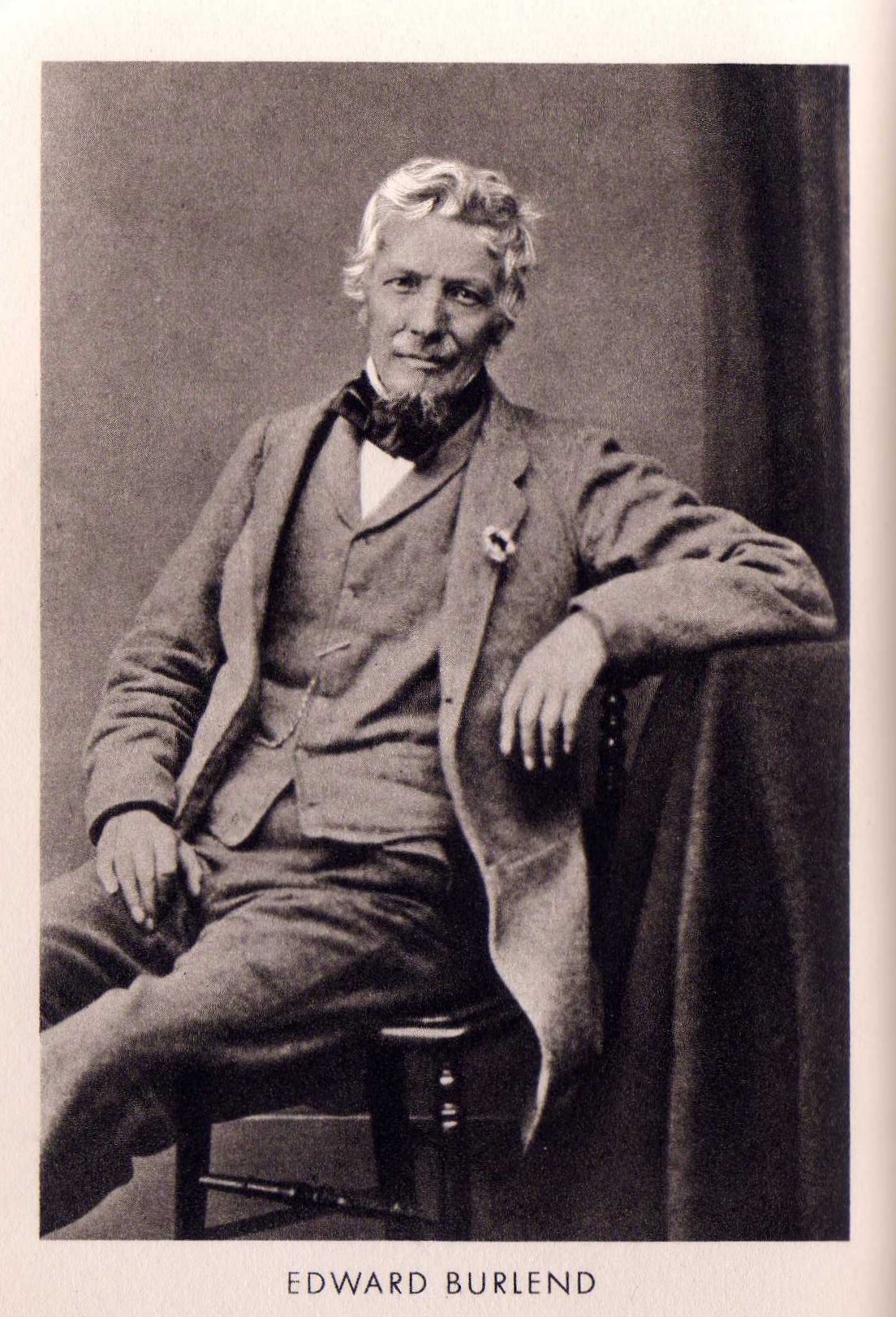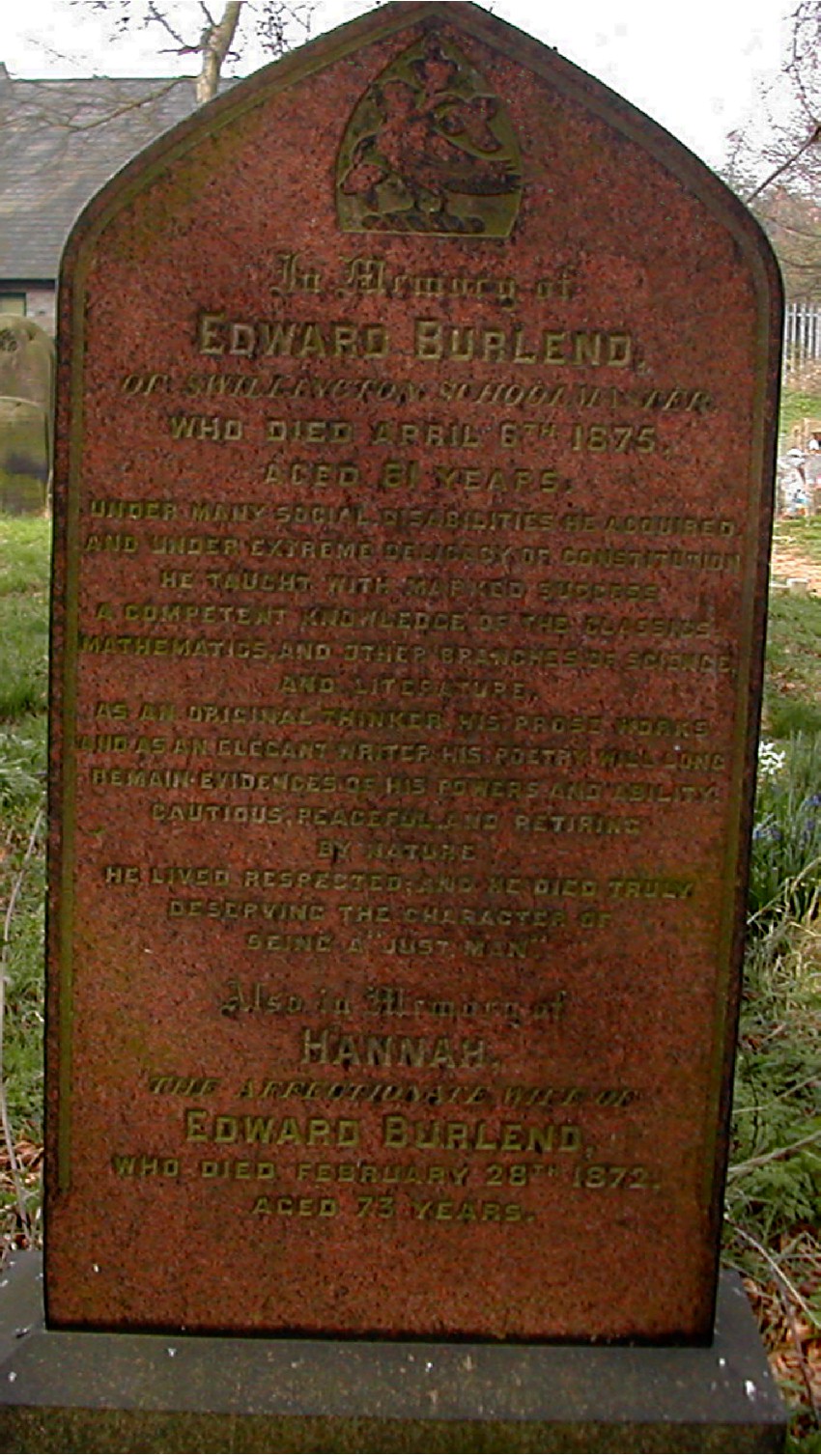 |
The writer, Edward Burlend, was born in Horsforth on 18 April 1813. His parents, John and Rebecca Burlend (neé Burton), took a small farm in Barwick on a 14 year lease in 1817, and Edward spent his boyhood there |
 |
The writer, Edward Burlend, was born in Horsforth on 18 April 1813. His parents, John and Rebecca Burlend (neé Burton), took a small farm in Barwick on a 14 year lease in 1817, and Edward spent his boyhood there |
| 'as corn at that time was selling well, the rent was fixed at too high a rate for us to obtain a comfortable livelihood. We did indeed, by dint of great industry and strict economy, maintain our credit to the end of the lease; but the severe struggles we had to meet our payments, (led to) the gradual diminution of our little property and the entire absence of any prospects of being able to supply the wants of a large family.' |
 |
‘In memory of Edward Burlend of Swillington, schoolmaster, who died on April 6th 1875. Under social disadvantages and under extreme delicacy of constitution, he taught with marked success a competent knowledge of classics, mathematics and other branches of science and literature. As an original thinker his prose works, and as an elegant writer, his poetry will remain evidence of his power and ability, Cautious, peaceful and retiring in nature he lived respected, and at his end truly deserving the character of a Just man.’ |